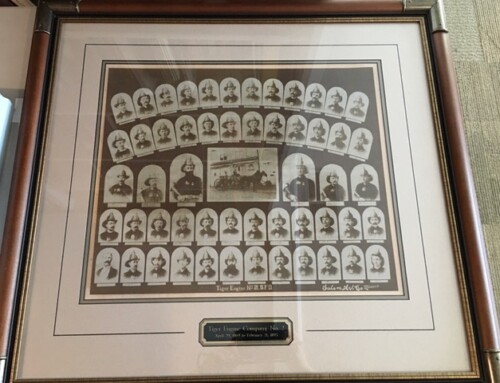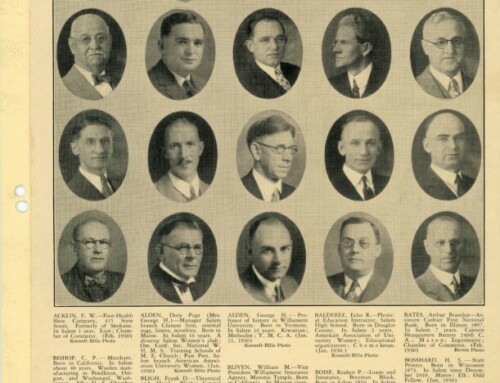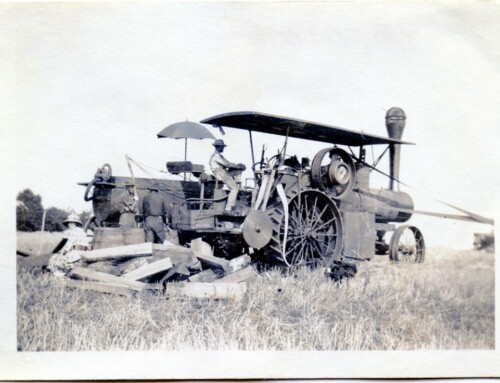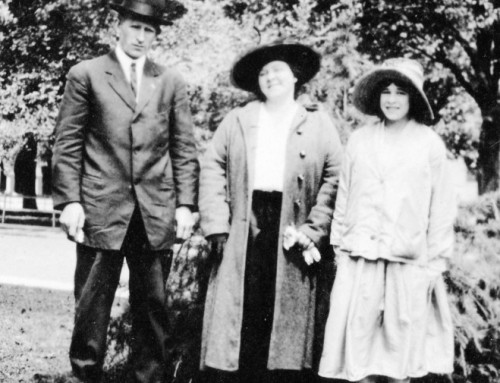In preparation for our new exhibit Yesterdayland: Innovations of the Past we’ve been immersed in the history of early 20th century technology and having fun pulling some of our more ingenious artifacts from the deep recesses of storage.
One series of items that our curator selected for use in the exhibit kitchen space were identified as steam cookers. I’ll admit I was more than a little curious. After years spent teaching home preservation classes for the 4-H extension service in Utah, and many more spent canning garden produce on the home front I thought I’d pretty much seen everything in terms of the equipment and process used, but these items surprised me.
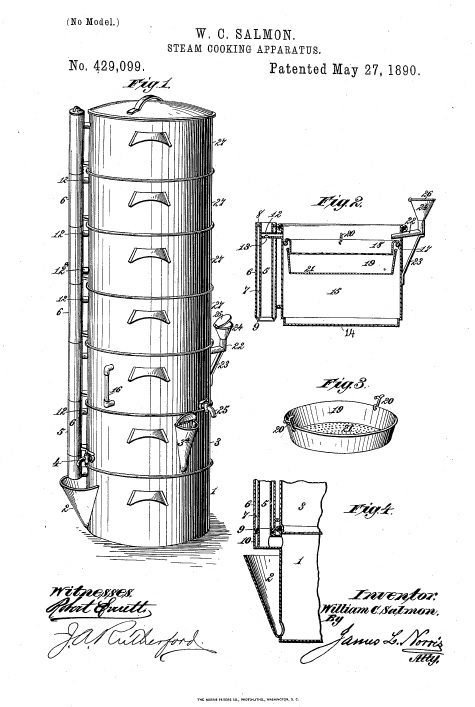
W.C. Salmon Steam Cooking Apparatus. United States Patent and Trademark Office (USPTO) http://pdfpiw.uspto.gov
The first artifact resembled a tower of stacked pans with vertical sections of pipe mounted on either the inside or outside, depending on the pan. After carefully unstacking the pieces the name “steam cooker” and two patent numbers were revealed. Research on the United States Patent and Trademark Office (USPTO) site led to the discovery that we actually had two separate types of steam cookers patented and manufactured by different individuals. The difference between the two lay in the type of pot handles used and whether the sections of pipe were mounted on the inside or outside. Common to both, was a base boiler capable of holding several quarts of water that could be heated to produce the steam energy needed to cook food in the pans stacked above it. Both cookers were designed for use on any type of stove be it coal, wood, gas or electric.
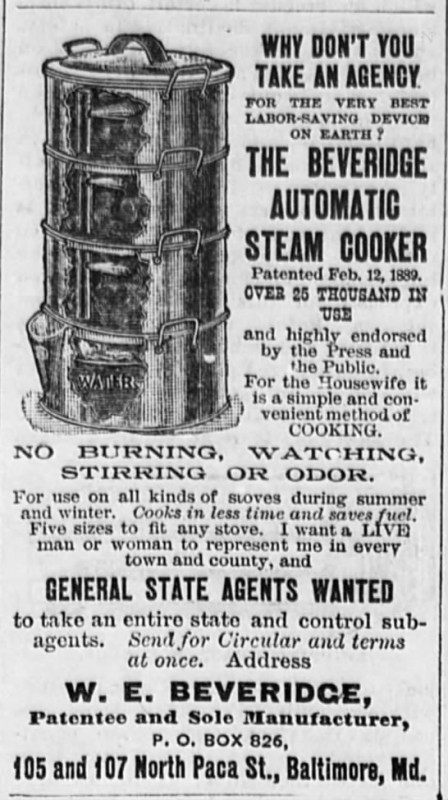
Ad for the Beveridge Automatic Steam Cooker as published in the 28 June 1890 edition of the Perrysburg Journal, Ohio. http://newspapers.com
One was a Beveridge steam cooker patented in 1890 by W.E. Beveridge and in wide use through the early 1900s. It was economical at the starting price of $4 for the base set in the Montgomery Ward catalog. The advantage to the steam method of cooking in stacked pots was the efficiency of using one stovetop burner and the fuel saved. Within one series of pots you could cook an entire meal without mingling flavors. And Beveridge boasted that food cooked by the steam method retained more flavor and nutritive qualities than the old method of boiling.
The additional pots intermingled with the Beveridge actually belonged to a steam cooker invented by W.C. Salmon around the same time period. While the Beveridge employed an internal steam pipe system with valve and whistle on top, the Salmon had an external system. The flange-like double handles were also an improvement over the bent thin steel rods of the Beveridge. Mr. Salmon’s cooking apparatus was also designed to include a coffee pot with dispenser as one of options. So, in addition to cooking your meal you prepared the beverage as well.
Mr. Salmon was an interesting gentleman with a passion for inventing and tenuous local connections. We can track him across the country through his patent paperwork and newspaper articles featuring his inventions. The common theme to his work was the use of steam energy in both cooking and powering mining equipment.
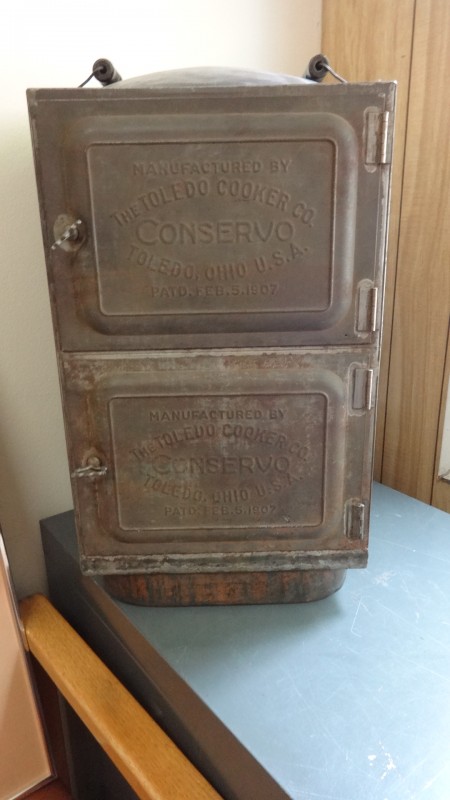
Conservo Toledo Cooker, predecessor to today’s Instant Pot. Willamette Heritage Center collection.
In addition to the stack of steam cooker pots, our curator brought a third item out of collections storage which turned out to be the predecessor to today’s Instant Pot. Its name was the Conservo Toledo Cooker and despite a patent date of 1907, it was not readily available in households until the 1920s-1930s. It listed for $12 in the Sears-Roebuck catalog and at that price point was a luxury item for most households. Like the Beveridge and Salmon it was designed to fit over a single stove-top burner, was made with a boiler base and powered by steam.
The fundamental design however was different. Instead of stacking pots, the Conservo had 2 main compartments with doors on the front section. Once latched, the unit could be pressurized to the point desired to process canned food or cook a meal. Indeed, advertising at the time boasted that within the course of a day you could process an entire hog and cook dinner at the same time. It had the capacity to process 16-quart jars or 32 pints at a time using the two wire racks within the two main compartments. Water was added to the unit by inserting a tube or funnel in the hole at the top corner which was replaced with a whistle valve that indicated when more water was needed. Canning time commenced when the water boiled and a little steam gauge popped up on top.
Come take a look at these items for yourself in the Willamette Heritage Center’s latest exhibit Yesterdayland: Innovations of the Past. Exhibit is free with regular museum admission and will be open through September 1, 2018. Don’t miss this unique opportunity to look back at the innovations of the early 20th century and how they influenced our community.
This article was written by Kaylyn Mabey for the Statesman Journal where it was printed 17 June 2018. It is reproduced here with sources for reference purposes.
Sources:
- Steam Cooker – W.E. Beveridge, Patent Feb. 12, 1889, USPO No. 397,687
- Steam Cooker – W.C. Salmon, Patent July 26, 1887, USPO No. 367,240
- Steam Cooker – W.C. Salmon, Patent May 27, 1890, USPO No. 429.099
- Ad, Beveridge Automatic Steam Cooker, Perrysburg Journal (Ohio), 28 Jun 1890
- The “Conservo” Book on Cooking and Canning, Swartzbaugh Mfg. Co, Google Books




